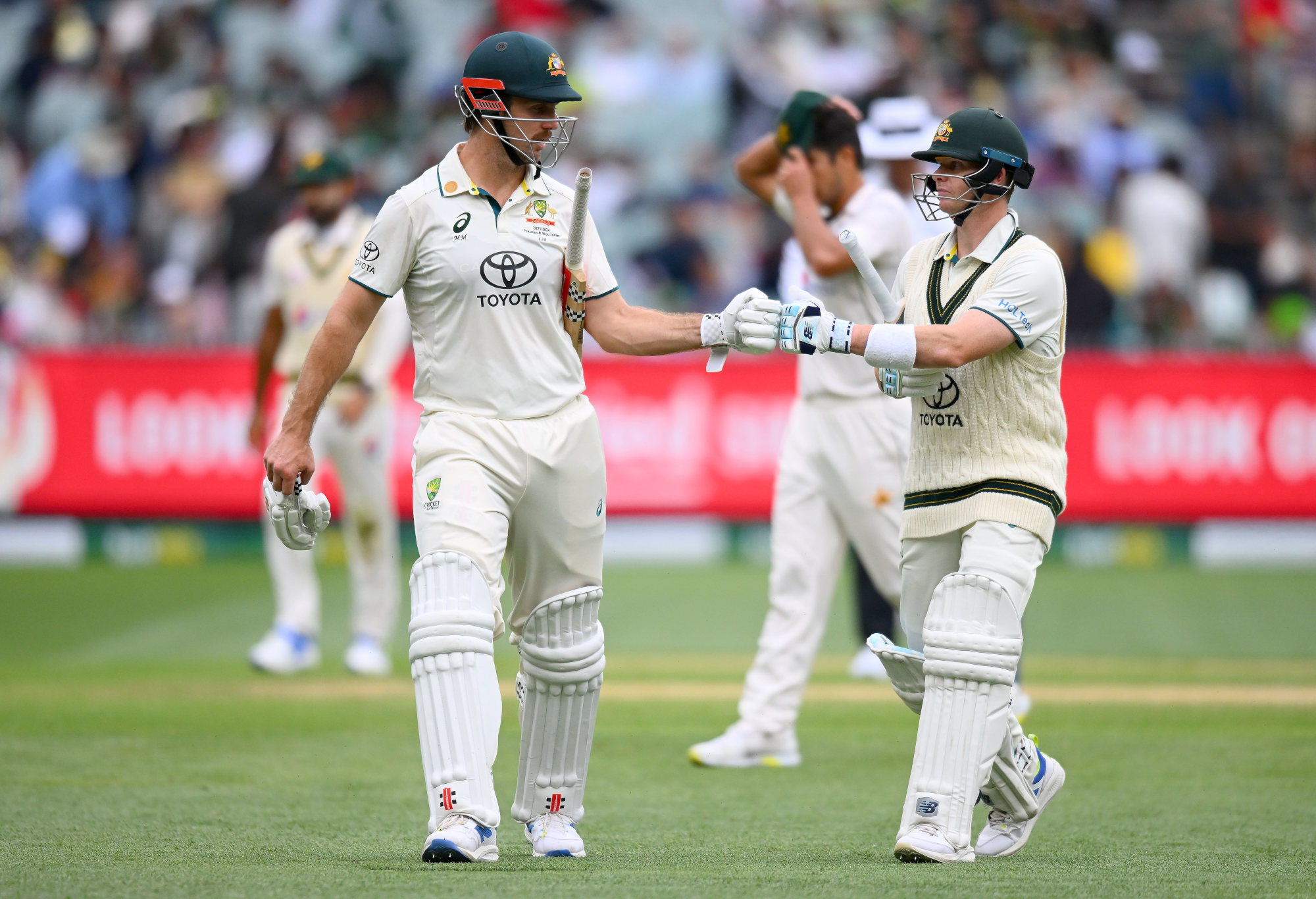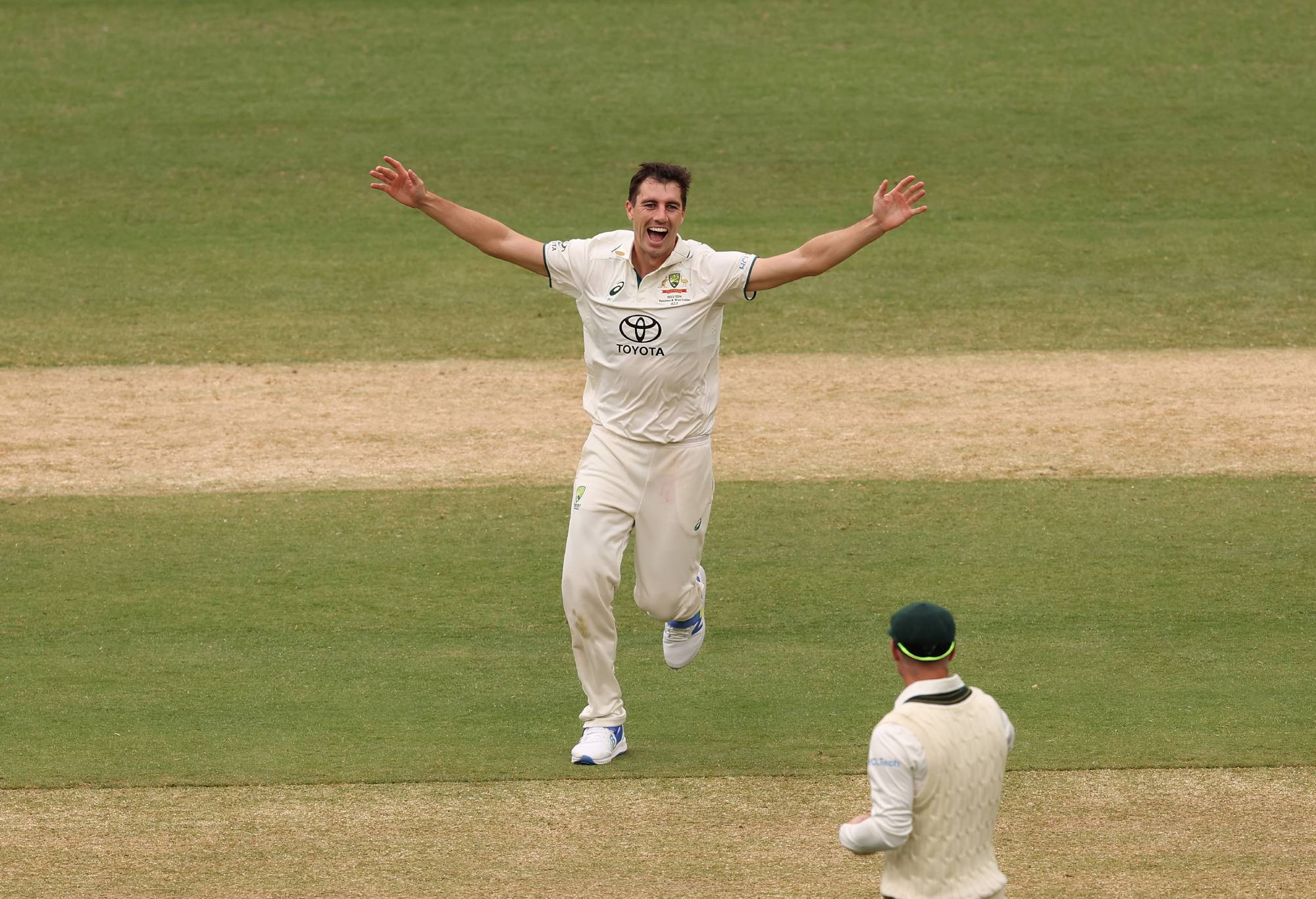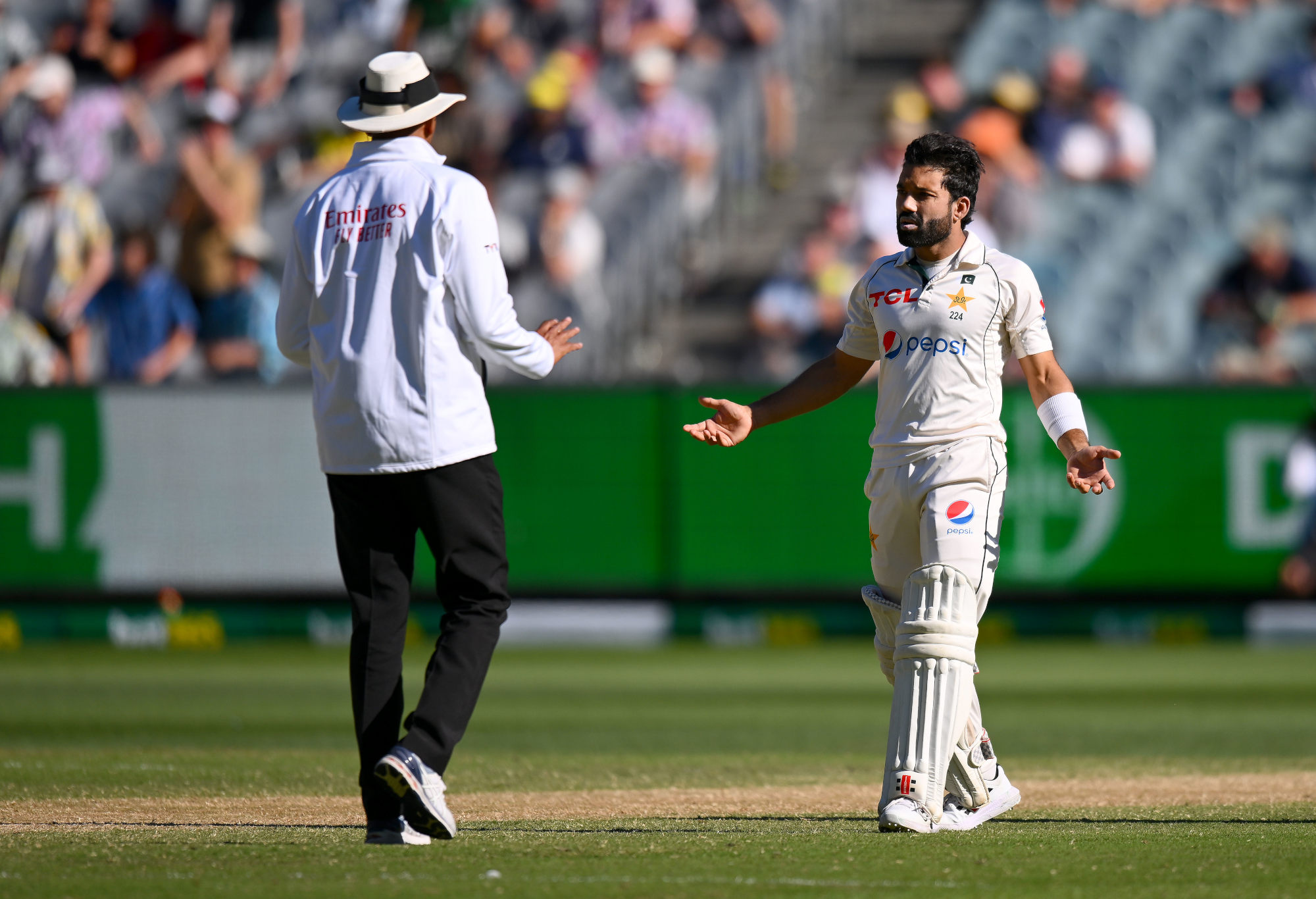It says a lot about Australia’s dominance on home soil that it’s now a surprise when a touring team gives them a run for their money rather than actually winning a Test. Pakistan got the points in a few...
It says a lot about Australia’s dominance on home soil that it’s now a surprise when a touring team gives them a run for their money rather than actually winning a Test.
Pakistan got the points in a few sessions in Melbourne and if not for the Mohammad Rizwan dismissal, they were a decent chance of chasing down the victory target before losing their last five wickets for 18.
The last time Australia was legitimately staring down the barrel of a defeat was the last time they actually lost a Test against India at Brisbane nearly three years ago.
Since then it’s been a cavalcade of cakewalks in the five Ashes Tests two years ago, last summer’s South Africa and West Indies (no) contests and the series opener against Pakistan in Perth.
Even though they were made to sweat it out at the MCG right up until what turned out to be the final session on Friday evening, the Aussies didn’t do much wrong.
Pakistan played well and if not for Abdullah Shafique’s basic catching errors at first slip in each innings they could very well have broken their 28-year drought on Australian soil and kept the Benaud-Qadir Trophy series alive heading into next week’s SCG Test.
If you need a refresher on how lopsided Tests have been in Australia in recent times, here is a list of the touring teams that have won a match in the 53 fixtures over the past decade, which we shall read out alphabetically.
India. Four times.
South Africa. Twice.
That is all.
Thirty is the new 20 or Dads Army?
Travis Head celebrated his 30th birthday with a win on Friday which now leaves Marnus Labuschagne as the only player in their 20s in the Australian Test team.
He is the oldest youngest player in the side in Australian Test history.
The selection panel’s reluctance to regenerate this team with fresh blood is not being talked about nearly enough right now but this current crop won’t play forever and if the majority of them exit the Test arena in quick succession, there could be some tough times down the track.
The English team which toured Australia in the mid 1990s was derided as Dad’s Army with all sorts of back-page newspaper mock-ups making fun of their plethora of old-timers like Mike Gatting, Graham Gooch and Alec Stewart.
From the team that lined up in the first Test at Brisbane, there were seven players in their 20s with 30-year-old wicketkeeper Steve Rhodes the only other player in the veteran category.

Mitchell Marsh and Steve Smith. (Photo by Morgan Hancock – CA/Cricket Australia via Getty Images)
The current Aussie side is super fit despite having so many seasoned campaigners and the selectors clearly thought Cameron Green would be a mainstay in the team so his drop in form which led to 32-year-old Mitchell Marsh’s recall has thrown a spanner in their plans.
Apart from David Warner, it’s hard to argue any of the other 10 aren’t thoroughly deserving of their spot right now so perhaps a team of experienced players will be the new norm.
Instead of players peaking from 25-30 like they have done in the past, you could mount a case that the next five years could now be when a cricketer can be in their prime with sports science making them fitter for longer.
The likes of Mike Hussey, Brad Haddin and Adam Gilchrist had long Test careers despite waiting a decade-plus in first-class cricket while Marsh and Usman Khawaja are currently flying the flag for players thriving in their 30s after a couple of false starts at a younger age.
Cummins all class
Pat Cummins is in the best form of his career.
The 30-year-old fast bowler is in the sweet spot of still being in his physical prime but also benefiting from years of experience bowling against the planet’s best batters.
His improvement as a one-day bowler, particularly the added weapon of his slower ball bouncer, was an underrated key ingredient in Australia’s World Cup success last month in India.
And with the red ball in hand, his relentless accuracy and ability to move the ball just far enough off the seam to catch the edge is second to none in world cricket.
The delivery that dismissed Babar Azam in the first innings was as close to unplayable as you can get. He produced a similar one later in the innings to get rid of Hasan Ali as part of his 10-wicket haul for the match.
If a gun like Babar couldn’t keep the ball from clattering into the top of his off stump what hope did the poor old tailender have.

(Photo by Robert Cianflone/Getty Images)
You pretty much know what you’re going to get with Mitchell Starc and Josh Hazlewood but Cummins is the skeleton key of the Australian attack.
He can do the grunt work with long spells or produce shorter bursts of pace when a partnership needs to be broken.
His MCG haul lifted him into Australia’s top 10 Test wicket-takers of all time with 252 in 57 matches.
Because of the five-plus years of Test cricket he missed due to injury early in his career, he won’t be able to reel in Glenn McGrath’s record of 563 for quicks.
But it would be a surprise if he didn’t end up ahead of all the other legends ahead of him – Jason Gillespie (259), Craig McDermott (291), Brett Lee (310), Mitchell Johnson (313), Starc (342 and counting) and the greatest of them all, Dennis Lillee (355).
Pakistan pack a punch
They came into this series with their regular change of captain and without Naseem Shah due to injury and Haris Rauf because he opted for the BBL instead, but Pakistan have acquitted themselves well.
Despite losing both Tests they have won plenty of new admirers for the way they have not backed down against the Australian juggernaut.
Mir Hamza and Aamer Jamal have toiled away for years at domestic level without getting much of a look-in but Pakistan have uncovered a couple of rough diamonds with those two on this tour.
They lack a quality spinner to be able to compete with the big guns of Test cricket and they need another world-class batter to emerge so they’re not as reliant on Babar, who still has plenty of years left in him at 29.

Mohammad Rizwan speaks with umpire Joel Wilson after being controversially given out caught behind off his glove. (Photo by Morgan Hancock – CA/Cricket Australia via Getty Images)
Pakistan have surely leapfrogged the Proteas when it comes to the race to be one of the preferred touring teams when India and England aren’t on the schedule.
South Africa were woeful last year and seem to be prioritising Test cricket less and less so Cricket Australia needs the likes of Pakistan, New Zealand and perhaps Sri Lanka to step up. The West Indies certainly won’t be able to give the Aussies a stiff challenge or get too many fans through the turnstiles.
MCG pitch goes from worst to best
Just a few years ago the Melbourne wicket was easily the worst in the country but curator Matt Page and his team deserve plenty of kudos for finally mastering the art of the drop-in pitch.
The surface for the Second Test was superb. There was movement for the seamers, turn for the spinners (Pakistan underbowled Salman Agha Ali) and batters could play shots if they knuckled down.
Even though the Test didn’t last five days that was not due to the wicket but some poor shot selection from both sides.
From a barren featherbed to the ideal Test wicket, the MCG strip is now the best in Australia, a mantle it has not held in living memory.








